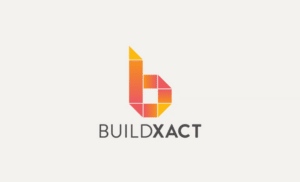
By Dustin Elliott
Products and Customer Insights Analyst, Buildxact
Australia is at a critical point in time. A pressing housing crisis, with sky high prices and a shortage of affordable homes, is being met by the government’s ambitions to increase housing supply.
In the face of this challenge, the Australian government put a freeze on changes to the National Construction Code (NCC) until 2029, to create a rare window of regulatory stability. This period offers you an opportunity to not only improve operational efficiency, but also to play a pivotal role in addressing the nation’s housing needs.
Stability in a Dynamic Market
The pause on residential changes to the NCC is more than just a temporary pause; it is a strategic opportunity. By providing regulatory certainty, the government has cleared a path for the industry to focus on optimizing operations, reducing red tape, and streamlining approvals. This stability arrives at a time when the construction outlook is showing positive signs.
Tom Deavitt, a senior economist with the Housing Industry Association, notes that housing starts were up 10 percent last year, with forecasts predicting a continued upward trend that may meet the government’s objective of 120,000 starts annually from next year.
Several factors contribute to this positive outlook:
Economic Growth
A population increase of 450,000 in the last calendar year, along with stable interest rates and low unemployment, is fueling demand for both new homes and renovation projects.
Consumer Confidence:
As consumer confidence returns, homeowners are beginning to undertake projects that they had put on hold, adding value to their properties and contributing to the $11 billion in home equity in Australia.
Increased Financing:
The number of loans for renovations has gone up nearly 10% from last year, showing more willingness to invest in housing projects.
The Challenge for Builders: Profitability Amid High-Demand
Despite the positive market signals, builders remain under pressure. The fear of rising material costs and the risk of inaccurate quotes can stifle growth and damage profitability.
As Chris Rennie, chief product officer at Buildxact, observes:
”Builders are worried about pricing going up and don’t want to quote jobs wrong and lose money. They want to be able to compete with other builders but are so cautious in today’s market and fear that everything will cost more and damage their business.”
This is a common sentiment echoed in the Association of Professional Builder’s 2025 State of Residential Construction Industry Annual Report, which highlights that small-to-medium sized residential builders are challenged by technology adoption, systemized processes, and financial literacy. To thrive, builders need to embrace tools and strategies that allow them to quote and win more jobs with confidence.
Embracing Technological Transformation
Technology offers a powerful solution to these challenges. Integrated construction project management platforms provide the tools necessary to streamline every stage of the building process, from initial estimation to final invoicing. In the context of the NCC pause, this technology becomes even more critical for maximizing output and profitability.
“The pause in the National Construction Code changes offers a unique moment for Australian builders to use the enhanced visibility they now have into construction means and methods and focus on operational excellence. By simplifying complex processes and boosting efficiency, we can help builders construct more homes, more quickly, and more profitably, directly contributing to solving Australia’s housing crisis.” — Steve Yates, Buildxact CEO
Key areas where technology can drive efficiency include:
Faster Takeoffs and Accurate Estimating
Online tools help builders to complete takeoffs and accurate estimates with greater speed and precision. This means faster responses, which means a higher success rate in winning work. AI-powered features can improve the process by reviewing estimates for common mistakes or overlooked items.
Streamlined Project Management
Using technology for job management creates efficiencies tracking leads, projects, and schedules. Plus, it allows for end-to-end visibility that minimizes delays, keeps projects on track, and improves communication between you and everyone else on the job.
Improved Workflow and Reduced Errors
By automating manual processes, technology can reduce the risk of human error, leading to smoother workflows and fewer costly mistakes. This translates directly to faster completion times.
Enhanced Profitability
Technology also allows for accounting integration, customizable templates, and real-time pricing from supplier catalogues so you can manage finances more effectively. Access to real-time pricing is particularly crucial for protecting margins against material cost fluctuations.
The Path Forward: Building a Stronger Future
The convergence of a stable regulatory environment and powerful new technologies presents a pivotal moment for the Australian construction industry. By embracing digital solutions, builders can overcome long-standing challenges, enhance their competitiveness, and improve their profitability. A contractor who invests in technology can potentially double their workload and revenue, transforming their business and contributing to the economic health of their community.
Ultimately, the adoption of technology is not just about business growth; it is about building a better future for Australia. Builders who leverage this opportunity will not only secure their own success but also play an indispensable role in addressing the housing crisis and constructing the homes that Australians need.












